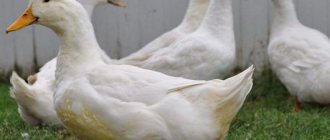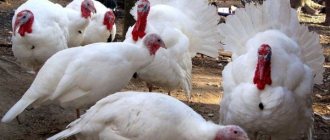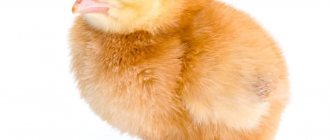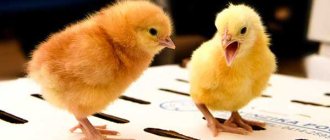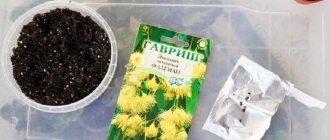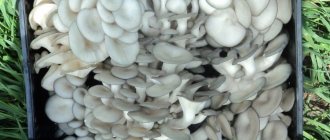Broiler turkeys are a type of poultry, its breeding is practiced by many farmers and agricultural enterprises. They are famous for their unpretentiousness, calm disposition, fertility and excellent taste characteristics of a dietary variety of meat.
In this article we will look at how to raise broiler turkeys at home, what to feed broiler turkeys and how to avoid common diseases.
North America is considered to be the pioneer of most modern breeds of broiler turkeys.
general description
The body of broilers is massive, muscular, with an impressive strong beak with a red appendage. The birds run quickly, and their developed wings allow them to fly over three-meter fences. They reach speeds of up to 50 km/h. Farmers consider broiler turkey breeds to be selective eaters that require specific housing conditions.
There are a number of nuances and recommendations that have a productive impact on the development of turkey poults and maintaining the health of the entire brood. The expended effort pays off in a short time, thanks to the high growth rate of broilers.
Male turkeys
Keeping an adult bird
By the end of the first month of life, the young animals are transferred to the turkey poultry. In modern poultry farming, two types of housing are considered acceptable for raising chicks:
- cellular;
- free.
The best walk is a lawn
When it comes to smaller birds, broilers are often raised in cages, where they spend their entire short lives. This method of maintenance is convenient and economical. But for raising turkeys, keeping them in a specially equipped room with a walking area is more suitable. This is due to longer periods of growing up and gaining optimal weight.
Conditions for keeping broiler turkeys
It is advisable to keep small broiler turkey poults in a specially equipped poultry house. Primary requirements:
- comfortable temperature conditions;
- dry cell;
- unlimited free access to water;
- presence of ventilated air.
The warm season is an excellent time to start raising broiler turkeys at home, providing the opportunity to walk the young animals in the yard. Cages are built wide: turkeys require large spaces.
Grown-up, stronger individuals are released into the poultry yard to eat kilos. Broiler turkeys are domestically bred birds. Some breeds are actively grown by large agricultural enterprises.
Advantages and disadvantages of raising broiler turkeys
The decision to start a flock of broiler turkeys is made after carefully weighing all the pros and cons, after clarifying the advantages of the bird and the difficulties that may be encountered during the growing process.
The obvious advantages include the following aspects:
- large yield of meat products of excellent taste from one carcass;
- dietary properties of meat - in terms of organoleptic properties, turkey meat is superior to any other poultry meat, as well as beef and pork, contains an increased amount of amino acids (protein sources), is well digestible, increases hemoglobin levels (helps eliminate anemia) and is recommended for consumption by children, adults and the elderly;
- the opportunity to get a new product - a large turkey egg, highly rated by nutritionists and simply delicious.
Turkeys are beautiful birds
Typical obstacles in the path of a poultry farmer are:
- more significant costs when arranging a poultry yard - large birds require more space than for chickens and ducks;
- a significant amount of feed (increased costs) and the need to carefully monitor its quality;
- relatively long growing period - up to six months;
- late puberty - usually by 9 months of age.
From the experience of turkey herd breeders, it is clear that difficulties often arise only in the first stages of mastering a new business and are completely surmountable. The costs soon pay off, care work becomes familiar and is no longer perceived as a challenge.
Turkeys in the poultry house
Important! Before having chicks, you need to familiarize yourself with the theoretical aspects of raising poultry, calculate the possibilities of financial and labor costs, prepare the material base - get acquainted with the breeds and choose the right one, build and equip a turkey poultry house.
External characteristics and distinctive qualities
Broiler turkeys are gigantic in size. The weight of adult males is 20–30 kg. Females grow to be much smaller in size: half the weight of males.
The main purpose of raising broiler turkeys is to obtain high-quality meat. Egg production is an important indicator, however, not the main one. The beginning of oviposition, weight, and number of eggs obtained depend solely on the breed of broiler turkeys.
Now let's talk about what to feed broiler turkeys at home. Adults are recommended to be fed 4 times a day. Broilers always need open access to the feeder, otherwise weight loss will occur. It is preferable to follow a diet. Inconsistent timing of feeding leads to malnutrition. Attacks of hunger are accompanied by irritability and aggressive behavior of birds.
Main characteristics
Broilers have a massive body with a well-developed chest, strong wings, and strong legs. In most cases, their plumage is white - such carcasses have the best commercial qualities. There are 3 areas of broiler crosses:
- light – up to 15 kg;
- medium (medium-heavy) – 16-17 kg;
- heavy – up to 25 kg.
The first 2 groups are universal - they are grown to produce not only meat, but also eggs (up to 80-100 pieces per year). The disadvantage of broilers is the need to control the diet and create optimal living conditions - special programs are being developed for different crosses. If they are followed, it is possible to obtain maximum weight gain - at home, as a rule, the results are more modest than in poultry houses with automated watering and feeding processes. How long broiler turkeys will grow depends on the characteristics of the hybrid - most often they are released for meat at 4 months.
Types of breeds
The key to successful breeding of healthy, well-fed turkeys is an individual approach to choosing methods for keeping a particular breed. There are three main types of broiler turkeys.
- Light breeds. Do not exceed 15 kg. Males weigh less than females - about 10 kg per carcass. Disease-resistant, strong individuals, females have high egg production rates. These include the Norfolk, Bestville, and White Dutch breeds.
- Medium sized broilers. Highly productive individuals, weighing 16 kg. This includes Moscow and North Caucasian turkeys.
- The largest breeds. The most popular type of broiler. The weight of adult males reaches 30 kg. Females grow half as much - 12 kg. The classification includes broad-chested Canadian white, Canadian bronze, big 6.
Many farmers have the freedom to choose among crossbred breeds of local turkeys. They are more resilient. Hybrid broilers rarely exceed the weight threshold of 10 kg.
The most highly productive and in demand among homestead farms are heavy breeds:
- Canadian broiler broad-breasted. The breed was developed through careful selection.
Almost all types of feed are consumed. The diet should contain various baits and vitamin complexes. Weight gain occurs rapidly. A month and a half later, the chicks reach 5 kg. After another hour and a half, they are ready to be slaughtered for meat. Oviposition of females begins at nine months, the number of eggs laid per year reaches 200 pieces. Canadian broad-breasted broiler turkeys are considered the largest among other representatives of early maturing breeds. The weight of an adult male at three months can reach 30 kg. - White broad-chested. Males reach 25 kg in weight, females - 11 kg. They have an average growth rate. At the age of five months, the weight of the chick is 7 kg. Representatives of the breed are picky eaters. Females have a high degree of egg production - 100 eggs per year, 90% of which will give birth to new chicks.
- Big 6 is a relatively young breed of domestic heavy crosses, which was bred in 2007 in the UK. It has an impressive ratio of total body weight to the amount of pure meat. External features resemble the broad-breasted white, the level of productivity is similar to the Canadian. At 3 months it reaches slaughter age. Weight can reach 30 kg.
Diseases
Broiler representatives do not differ from their counterparts in terms of health and susceptibility to diseases, therefore they are characterized by typical types of infections.
Of the contagious diseases of turkeys, it is worth noting:
- respiratory mycoplasmosis;
- tuberculosis;
- histomoniasis;
- worms;
- smallpox;
- Newcastle disease.
If these infections are confirmed, you should immediately not only isolate the individual and begin treatment with medications prescribed by the veterinarian; but also to carry out preventive measures, according to the doctor’s recommendations, among the main livestock.
Foot disease in an adult turkey
Non-communicable diseases:
- hard goiter;
- hypovitaminosis;
- eating uncharacteristic foods in large quantities.
Such conditions can occur due to unbalanced food, too close quarters, or due to genetic predisposition.
Read about the Victoria turkey breed here.
Broiler turkey
This breed was developed as a result of hybrid crossing. This type of poultry has a heavy, strong body, a strong and powerful beak with a red appendage. The wings are fully developed, with their help the turkey is able to fly over a fence three meters high, and thanks to its strong legs it can run at a speed of 50 km/h.
The advantages of raising these birds include the following:
- Ecological purity of homemade meat.
- The nutritional value of meat is that it contains an abundance of valuable microelements and vitamins and, at the same time, an extremely small amount of fat.
- High nutritional value and good taste of turkey eggs.
- When breeding for sale, there is a quick payback: a higher price for meat due to the fact that it is considered rare.
- Waste-free breeding and sales of products. In fact, everything can be sold: chicks of all ages, feathers, down, meat, eggs.
But the disadvantages of growing are:
- The need for special conditions for keeping young poultry.
- High probability of mortality.
- More significant costs when equipping a yard - large birds require more space.
- Separate keeping of young birds away from other poultry due to the great timidity of young turkey poults and possible diseases.
- Larger quantities of feed and the need to control its quality.
- Due to the tendency of turkeys to become obese, an increased amount of greens is required in their diet.
- Delayed sexual development - usually by nine months of age.
Did you know? Turkeys are the largest poultry from the gallinaceae order. Only ostriches are bigger than them.
Walks for the health of turkey poults
If it turns out that your turkey poultry is not very large in size, then you definitely need to make sure that your broiler turkey poults and their rearing are carried out taking into account all the requirements. It is necessary for individuals to have a place to walk. Regardless of the breed of broiler turkeys, this is very necessary for their health, since birds that move little often have obesity, which will negatively affect the quality of the meat and, accordingly, your wallet.
In addition, by walking turkeys you can save a lot on feed. After all, it’s very easy to plant perennial grasses in the area where you’re walking. It could be clover or alfalfa. And if there is a lot of space for walking, then you can plant annuals. For example, peas, oats and others. The advantage of such walking will also be that your birds will receive all the necessary vitamins and minerals from green plants.
You can walk a broiler turkey not only in the summer. If the winter is not very cold and frosty, then broiler turkeys can walk just fine. But there are conditions. The walking area should be covered with bedding, hay, straw or sawdust. It is also recommended to install a canopy over the pasture not only in winter, but also in summer. This will protect the turkeys from precipitation, extreme heat, and wind. There are birds that in winter simply do not want to leave the turkey poultry. In this case, it is worth pouring a thin path of grain onto the street and the bird, absorbing the grain, will calmly go outside. It is also worth taking care of a high and reliable fence for the walking area, since the turkey can easily climb over if the fence is too low and run away.
Heavyweight breeds
“Heavyweights” include turkeys that quickly gain slaughter weight:
- in 16 weeks - from 18 kg;
- for 28 weeks - maximum weight 26 kg.
Let's look at some of them.
Broad-chested white
This breed was developed in the last century in North America. The body is covered with bright white feathers; a “bow” of black feathers is clearly visible on the chest. The body is large, oval in shape. Weight can reach 25 kg. Unpretentious, well suited for growing in cages.
They lay eggs from nine months. Egg laying lasts several months; during laying, about a hundred eggs are laid, of which 90% are fertilized. They are picky about food, they only need high-quality feeding, with mandatory valuable additives.
Moscow bronze
Bred in the middle of the last century by crossing local bronze turkeys with bronze broad-breasted ones. Clutch - about 90 eggs, of which over 90% are fertilized. Males gain weight up to 12 kg, females - up to 7 kg.
Hybrid converter
Turkeys of this breed were bred in Canada. Their advantages: attractive presentation, excellent quality and high level of meat maturity. They are distinguished by a wide chest and white plumage. Agile and muscular. The head is small in size, the beak is powerful with a bright red earring.
Running speed is 45 km/h, take-off height is 2 meters. By the fifth month, males weigh 19-22 kg, females - from 9 to 12 kg. Clutch - 50 eggs in three months, the female incubates them for about four weeks.
BIG-6
The breed was bred in England in 2007. Characterized by high productivity and high meat maturity. Reaches slaughter age at 3 months. The weight of a male can be up to 30 kg. Typically, the male weighs from 15 to 17 kg, the female - 6-7 kg. The fertilization rate of eggs is about 80%.
We advise you to learn more about the features of keeping and breeding broiler turkeys of the Broad-breasted White and Big 6 breeds.
BYuT-8
They are distinguished by a convex body, strong paws, a red beak with a “beard” and an arched neck. The feathers are completely snow-white. By 18 weeks of age, males have a live weight of 15 kg. During the day, live weight increases by 110 g. An adult male has a live weight from 28 to 30 kg, a female - 14 kg.
Representatives
The broiler breed is very popular; every year breeders develop more and more varieties. But farmers practice breeding certain, time-tested and proven species that are productive and require less labor.
BIG-6
BIG-6 are heavyweights in their class, their cultivation comes down to 4 months, no more. They originally appeared in England, but are now common in many countries. Experienced poultry keepers advise choosing birds with white feathers due to their skin color. The snow-white representatives have a pink, uniform epidermis; colored poultry has a spotted skin, which has an unattractive effect on the appearance of the carcass and reduces consumer demand. Purebreds have only a small spot in the chest area of black color, a kind of BIG-6 mark. In 4 months of growing a Big-6 cross, you can get up to 20 kg of meat.
Surprisingly, broilers are capable of laying eggs with a high fertilization rate of up to 80%. In this case, the offspring are of different colors and there is no guarantee that the chicks will look like their parents.
BIG-6 is bred both in large poultry farms and in small private farms. Their unpretentiousness and rapid growth make them in demand. And light fluff can be used as padding. Read about the profitability of raising turkeys for sale in this article.
Exterior:
- dense down and shiny outer feathers;
- large wings, on which turkeys can fly very well;
- the chest is convex and well developed;
- legs are strong and muscular;
- the head is small on the neck with a lot of red folds.
It is recommended to clip the wings of BIG-6 to prevent individuals from flying away.
Hybrid Converter
The hybrid is a peace-loving and non-conflict turkey.
Hybrid Converter is solid and, like BIG-6, a heavy turkey. By the 22nd week he has gained 25 kg and is ready for slaughter. It is possible to grow up to large numbers, but most farmers consider this not profitable. Compared to BIG-6, less feed is consumed at the same growth rate.
For one special property, the variety received a nickname among poultry farmers - Indo-ostrich. The turkey can run fast; the maximum recorded speed when the bird is in danger reaches 45 km/h. For a large and clumsy individual, such a cross is considered exceptional.
Character Hybrid Converter is a friendly and non-conflict turkey. The livestock behaves calmly and peacefully among themselves. Poultry farmers note the easy learning ability of birds.
Turkey meat is considered suitable for use in baby food, as it contains a large complex of vitamins and microelements. It has all group B, selenium and a large amount of protein. Read more about the benefits of turkey meat.
Exterior features:
- small head in relation to the enlarged chest;
- the beak is strong with a bright, scarlet growth;
- the plumage is predominantly white.
These turkeys are used on the farm for two reasons:
- source of dietary meat;
- warm and soft down for pillows and blankets;
- When plucked, no characteristic marks remain on the skin, which is considered an undoubted advantage of the breed.
Canadian broad chested
Canadian broad-breasted turkeys are considered early ripening and are ready for slaughter from the 6th week, with an individual weighing 5 kg. The most rapid growth occurs before 3 months, after which weight is gained slowly. In this regard, maximum slaughter occurs before the 15th week of life.
Birds have the following characteristics:
- good health, immunity to colds;
- easily tolerates low temperatures;
- high percentage of fertilization;
- color black with bronze.
Unfortunately, the maternal instinct is poorly developed in turkeys, so young turkey chicks are bred using an incubator.
Hidon
The Chidon variety is a Dutch breed. It was introduced into Russia during the Soviet Union in 1980. Turkeys rapidly gain weight and are ready for slaughter within 30 weeks of birth.
Hidon is characterized by high meat productivity.
On average, the carcass of an adult male weighs 20 kg, females are slightly smaller - about 10 kg. The meat is very tender, dietary, with fine fibers and has beneficial properties. Farmers clearly calculate how much food gives a certain amount of growth. When feeding 1 kg, the quidon increases by 2.7-2.9 kg.
Turkey eggs are as healthy as meat. Turkeys of this breed lay about 90-110 turkeys per year, which is considered a pretty good result for broilers.
Breeding broiler species is called cross-breeding, that is, the result of internal crossing, improvement of the first generation. At the same time, the chicks do not have the qualities of their parents.
Necessary conditions for keeping broiler turkeys
By the end of the first month after birth, the young animals are transferred to the turkey poultry. There are two types of keeping turkeys: caged and free-range. We will consider the option of keeping indoors.
Important! Chicks and adult turkeys must have access to clean drinking water at all times.
Premises requirements
The room (cage) for grown-up turkey poults should be selected or equipped according to the calculation: no more than two broilers per square meter. The temperature should not fall below 20°C. Daylight hours should be 12-13 hours or more. If necessary, daylight hours can be extended using additional illumination lamps.
How should a turkey poultry be equipped?
Its arrangement must meet the following basic requirements:
- Reliability of the structure, preventing any animals from entering inside, especially snakes and all kinds of rodents.
- Zoning the turkey poultry will prevent disorientation among the birds, and will also prevent collisions between males and thereby save the livestock.
The main areas should be:
- Feeding plot. Equipped with containers for different types of food - bulk, dry, wet. The size of the container is at most a quarter of a meter per individual. Drinkers can be placed in different places or in a line, with a constant supply of clean water. The floor is covered with a bedding that can absorb moisture, which should be changed or placed on top of a fresh one, this is done to avoid the spread of infections.
- Perches. They are made from thick crossbars with rounded ends. They are usually equipped starting from 70-80 cm from the floor surface in the form of gradually rising ledges located in a semicircle or circle. Calculation of the number of perches - 45 turkeys per one. They are located in the most shady place without any lighting. A deep bedding or tray is placed below and is periodically cleaned.
- Walking. It is located between the sleeping area and the feeding area. It would not be amiss to lay out heaps of limestone and chalk around the perimeter, and arrange ash baths. This location will be where the most turkey activity will occur during inclement weather.
- Nests. Installed in a quiet and no-passage corner. One place is equipped for four to five females. They are made in the shape of a house with a pitched roof, always with a hole slightly higher than the level of the nest and the size of a turkey. Smooth straw is used as bottom bedding.
- Sections for broilers of different ages. Young animals or the most aggressive males are placed there for the first time.
Important! Sawdust and shavings are strictly prohibited for use as bedding when keeping broiler turkeys - they may mistake these materials for food.
Walking area
Walking outdoors is very beneficial for broiler turkeys. However, due to the characteristics of these birds, the place for them to be outdoors must be appropriately equipped:
- The site should be spacious (the larger the better).
- High (at least three meters) fencing.
- Canopy. As protection from the sun and precipitation, with a low fence it is an obstacle when the bird tries to escape.
- It is advisable that the land be sown with forage grasses (one- or perennial) - this will enrich the turkeys’ diet with proteins and fresh herbs.
- In the warm season, equipment is required for feeders, and, of course, drinkers.
Video: turkey walking area
Eating at home
The hatched turkey poults are fed for the first time within 24 hours. Feeding mode:
- 1st week - 9 times a day;
- 2nd week - 6 times a day;
- 3rd and subsequent weeks - 3 times a day.
On the first day, the chicks are given finely chopped boiled eggs. On the second and third days, add cottage cheese. From the fourth day, turkey poults are fed pre-start feed or wet mixtures are prepared using meat, fish broth or yogurt. Gradually add vegetables, grains, meat and bone meal and herbs. They stop producing eggs at one month of age.
The diet of broiler turkeys includes:
- powdered milk;
- corn;
- millet;
- crushed oats, barley;
- soybean meal;
- sunflower cake;
- fish, bone meal;
- chopped boiled potatoes, carrots;
- green onions;
- alfalfa.
To awaken the appetite, turkeys are given spices: pepper, ginger, garlic, anise.
Diseases of broiler turkeys
With proper care, birds are not prone to serious illnesses, but they can still catch viral infections. Negligence in temperature conditions or abuse of ventilation can cause the phenomenon of birds sneezing. This symptom usually indicates a cold, and showing the animals to the veterinarian is a prerequisite for preserving the lives of the entire turkey population.
Common diseases of broiler turkeys are:
- Mycoplasmosis is respiratory. A cold with a pronounced tendency to sneeze affects birds in the cold season with fairly high humidity in the room. Treated with antibiotics under strict veterinary supervision.
- Tuberculosis. A dangerous disease that is practically untreatable, but it can be prevented with effective preventive measures. Prevention of the disease consists in the absolute cleanliness of the premises, birds and eggs.
- Histomonosis. It most often affects chicks due to insufficient compliance with hygienic rules for caring for turkey poults. Removal of parasites is carried out by a professional veterinarian using special preparations.
- Helminths. The most insidious contagious disease, because the initial stage of infection is not visible externally. Typically, broiler turkey breeders turn to doctors when the birds are very thin and weak in the legs.
- Smallpox. It appears as rashes on non-feathered parts of the body and is transmitted from insects. This disease cannot be cured, so sick birds must be isolated and destroyed.
Broiler turkeys are susceptible to many diseases, not all of which can be cured. But with proper care and compliance with all breeding rules, birds grow healthy and well-fed.
Diseases and their treatment
Broilers become infected with diseases typical of turkeys:
- enteritis - inflammation of the digestive tract, manifested in the form of diarrhea, treated with antibiotics and probiotics;
- mycoplasmosis is a fungal infection of the respiratory tract that develops in chicks and adult turkeys when fed moldy grain, treated with the antibiotic “Chlortetracycline”;
- histomoniasis is a bacterial infection transmitted from chickens and geese, causing foamy diarrhea and weight loss; Furazolidone is added to the feed of sick birds;
- worm parasites are destroyed with anthelmintic drugs “Piperazine”, “Phenothiazine” and a preventive run is carried out every six months;
- conjunctivitis - watery eyes and swollen eyes are treated with antibacterial drops;
- sinusitis - inflammation of the mucous membranes develops in turkey poults when the room is insufficiently heated; for treatment, a course of antibiotics is prescribed and the temperature in the poultry house is regulated.
To prevent diseases, incubators, brooders and poultry houses are disinfected before introducing new birds. It is also important to monitor the expiration date of food and remove uneaten portions. Broilers should be purchased from reputable farms and the offspring bred independently should be vaccinated.
Breeding secrets
There are some secrets to raising broiler turkeys that can simplify bird care to a certain extent, as well as achieve better results. For example, the most active, healthy and strong representatives of the breed should be selected for breeding. They should have a dry umbilical cord and smooth fluff.
Adults, just like young animals, must have a healthy appearance. Their droppings should not be liquid. You need to know that liquid droppings are the first sign that the bird is sick.
Correct living conditions are considered the key to successful breeding of this poultry. When caring for turkeys, important points are:
- cleanliness and dryness in the poultry house;
- temperature regime correctly set depending on the age of the bird. It is best to keep birds of approximately the same age in the same turkey poultry. This makes it easier to set the optimal temperature for a certain age;
- good lighting;
- balanced nutrition, which should be selected based on the age of the turkeys;
- clean water, which is always available in the drinking bowl.
The biggest enemy of this type of poultry is drafts. However, the room should be ventilated periodically. This will avoid many problems associated with parasites and infections.
It is important that there is enough free space in the room, as birds sometimes start running in circles.
Raising turkey poults
Free-ranging young animals
As noted, a hen can also hatch eggs, but most farmers prefer to use an incubator for this purpose. With the latter method, the hatching rate is 80%. When laying, all eggs are marked, but only on one side, this way they avoid confusion when pecking.
Broiler chicks do not inherit the qualities of their parents and are significantly smaller in weight.
Poultry farmers buy day-old chicks in specialized places. Several factors influence the choice of purchase location:
- seller's reputation;
- number of years on the market;
- the conditions under which the parent material is contained;
- remoteness of the farm from your farm.
It is advisable to transport chicks with a minimum amount of time. Thus, you do not risk bringing dead chicks.
Removal algorithm:
- Broiler turkey poults are placed under a lamp until the feathers are completely dry and rise to their feet on their own.
- Then they are placed in a large cardboard box or basket, where they maintain a constant temperature of +25˚C. The space is calculated around 15 square meters. cm per 1 individual.
- Just like adults, they are provided with a constant light flux for at least 14 hours a day.
- Containers with chicks are mechanically cleaned daily.
- From the second week, the broilers are taken outside and allowed to run freely. Every day the time spent in the sun increases.
This material will tell you about the description of the Bronze-708 turkey breed.
Nutrition
Nutrition is a special element in the development of turkey poults. The first feeding occurs no later than 24 hours after hatching. Overcrowding and starvation lead to the death of livestock. It is important to pay attention in the first week, food is given 9 times a day for 7 days, the next 7 times the number of meals is reduced to 6, the third week is transferred to 3-4 meals a day. From 22 weeks the bird is considered an adult.
You can feed broilers either ready-made dry feed for chicks or home-made mash. The table shows the norms of certain substances per head per day for this group of turkeys.
| 1-5 day | 6-21 days | 22-28 days | |
| boiled egg | about 0.8 g | about 9 g | No need |
| powdered milk | No need | 2 g | 2.5 g |
| corn | 5 g | 9 g | 38 g |
| millet | 4 g | 8 g | 25 g |
| cake | 3 g | 7 g | 22 g |
| fish flour | No need | 2 g | 4 g |
| bone flour | No need | No need | 3 g |
| chalk | No need | 0.7 g | 2 g |
| vitamins | 0.1 g | 0.3 g | 1 g |
| grass | 5 g as juice | 7 g | 15 g |
All new ingredients are introduced gradually, increasing the dose to the table values over the course of a week. In addition to the mentioned components, crushed grain, crushed to 1.5-2 mm, is added to the mash; at the end of the 3rd week, the grinding is increased to 3 mm in diameter so that the transition to whole grain is gradual.
New ingredients should be introduced gradually to turkey poults.
There are 2 feeders in the poultry house: for dry and wet food. Curdled milk or whey is added to the mash; dairy products contribute to the accumulation of protein.
In addition, bowls with constant clean water are required, to which there is access around the clock.
Some aspects of cultivation
Recently, separate rearing of turkeys and turkeys intended for slaughter has been promoted. In this case, feed consumption is more rational, and weight gain increases by a quarter to a third. Separation is carried out at 8 weeks of age, before planting in the turkey poultry.
Females are fattened no longer than 20 weeks, because after this period the growth rate slows down. Males grow up to 26 weeks, i.e. one and a half months longer. Females destined for breeding are selected during the rearing process and kept until 9 months of age, and then mated with a male.
When selecting birds for breeding, it is necessary to use birds with characteristic characteristics of the breed and exclude inbreeding.
Turkeys are significantly smaller than turkeys
Important! The offspring of a purebred bird repeats the parental characteristics and successfully reproduces the bird flock. The offspring of crosses are rarely successful - complex selection when creating a cross has a side effect - the parental characteristics are split. Therefore, cross-breed eggs are often used as a food product, and not for restoring the population of the poultry yard.
Thus, raising turkeys of one or more breeds can become the basis for the financial well-being of both an individual family and a farm. You just need to competently approach the development of the concept and take into account the smallest aspects of the matter.
Features of broiler breeding
- Broiler turkeys have a number of breeding features; fulfilling the conditions ensures a greater and faster gain of muscle mass.
- Turkeys and female turkeys are kept separately; if mating is planned, then the individuals are combined in a certain room for a short period. As a rule, fertilization is possible at 7-8 months.
- For the first 2 months, both sexes are kept together. By the third week, it is already easy to distinguish large males from miniature females.
- Turkeys grow until the 20th week, and turkeys - until the 26th.
- When mating, individuals from one related line are excluded, and there is a high risk of congenital genetic changes in the offspring.
Reproduction
Many farmers are also interested in ways to increase the number of poultry such as broiler turkeys on their farm. Breeding these animals is a relatively difficult matter. Like chickens, the offspring of turkey crosses, unfortunately, do not adopt the high productive qualities of their parents. It is possible to obtain good young animals from eggs laid by a bird only if it is not a hybrid, but belongs to some good meat breed.
In principle, it is quite possible to obtain cross-broiler chicks in an incubator on your own. But in this case, you will have to buy eggs from a poultry farm. They are, of course, cheaper than turkeys. But it is quite difficult to breed chicks from them without loss without proper experience.
Incubation
When breeding broiler turkeys, incubation material is purchased from trusted breeders - it is not possible to obtain offspring from crosses within the herd. Before being placed in the incubator, eggs are stored at temperatures up to +12°C and humidity 80% (maximum period - 10 days). The eggs are turned over during storage. To eliminate the risk of bacterial infection developing in a humid, warm environment, they are disinfected before planting using a solution of potassium permanganate.
The duration of incubation of broilers is 28 days. Stage 1 takes 7 days. Humidity during this period should be 65%, optimal temperature: +38°C. The eggs are turned 6-8 times a day. At the end of this stage, the incubation material is ovoscopic. In the 2nd week of incubation, the temperature is left at the same level, humidity is reduced to 45-50%. As at the initial stage, the eggs are turned over daily.
Stage 3 lasts from days 15 to 25. Humidity is increased to 65%, temperature is maintained at +37.5°C, eggs are turned 4 times a day. Additionally, they are cooled by removing the trays for 10-15 minutes once a day.
Starting from the 26th day, the eggs stop turning and cooling - the stage of hatching turkey poults begins. During this period, it is important to ensure that sufficient air enters the device during ventilation. Humidity is 70%, temperature 37°C.
The hatched turkey chicks are allowed to dry and moved into a brooder, where a comfortable temperature is maintained and lighting is provided for 23-24 hours in the first 5 days. Gradually the length of daylight hours is reduced:
- days 6-14 – 18 hours;
- Days 15-60 – 14 hours.
Broiler turkeys: raising young animals
After the chicks hatch, they should be placed in boxes or a special brooder and provided with 24-hour lighting. This will reduce possible lunge to a minimum. A day after hatching, the lamp in the box or brooder can be turned off for half an hour. Next, the lighting time is reduced by another 30 minutes every day.
The bedding of turkey poults should be changed as it gets dirty. Food and drink should be present at all times in the chicks' box or brooder. At first, young animals should be fed with a special “Start” mixture. You can also offer the chicks chopped eggs and cottage cheese. For the first three days, turkey poults are given green tea rather than raw water.
Characteristics of the Big-6 cross
Broiler turkeys of this cross can reach a weight of 40 kg. But this is a record weight even in adulthood, when the meat is already becoming tough. In addition, keeping broiler birds for too long will only torture them.
Turkeys are usually slaughtered quickly, since their maintenance after six months becomes unprofitable, so such facts are unknown with turkeys. There have been cases with broiler roosters when they tried to leave them “for later”. As a result, the rooster became so heavy that he could no longer move and could only crawl on the floor. As a result, his relatives, the chickens, pecked at his belly and pecked out his intestines for profit. So if a bird is bred to quickly gain weight and be slaughtered just as quickly, you shouldn’t feel sorry for it.
White plumage in broilers is preferable, since in this case there are no dark spots that are unpleasant to the eye on the skin of the carcass.
It is unlikely that you will be able to breed this cross on your own, since, firstly, the cross in the second generation will split into parental forms. Secondly, only males are usually on sale. And most often, males are sterile, so they cannot even be hybridized with home-grown turkeys.
Two other crosses, bred by the same company, are labeled Big-8 and Big-9. Externally there are no differences between them.
Comment! Big cross turkeys lay only 118 eggs per year, from which no more than 90 poults are hatched.
Crosses are created by crossing “light” turkeys and “heavy” turkeys. These crosses are slaughtered at 3-4 months.
In addition to British crosses, Moscow Bronze, White Broad-breasted and Canadian Broad-breasted are also recommended for breeding in Russia on private farmsteads.
Pros and cons of growing
Positive aspects of breeding turkeys:
- A large amount of meat at relatively low feed costs. For every kilogram of live weight, up to 2 kg of feed is consumed.
- High quality meat: dietary, with a low amount of fat and a large amount of easily digestible protein.
- Large eggs.
- Rapid weight gain - broiler turkeys are usually bred for the summer. By autumn they gain slaughter weight.
- Very often, turkeys will easily sit on eggs and hatch them, which will make breeding easier.
But there are also some disadvantages that you need to be prepared for when raising broiler turkey poults:
- Sensitivity of chicks to dampness and cold.
- The need for a high fence.
- Some individuals may be aggressive.
- Difficulties in slaughtering and eviscerating the carcass due to its large size.
- Heavy crosses, 15-25 kg each, have difficulty reproducing on their own. Due to their large size, these turkeys require artificial insemination.
Important! There are “light” versions of broilers that are quite capable of reproducing naturally.
Some nuances of growing
In order for the breeding of giant birds to be successful, experienced poultry farmers advise carefully monitoring the composition and quality of feed and monitoring the health of turkeys:
- The main thing in keeping small turkey poults, in addition to providing them with adequate nutrition, is warmth and dryness.
- An analogue of synthetic antibiotics when growing turkeys are green onions and garlic tops.
- Instead of ready-made preparations for worms, a decoction of yarrow, tansy or chamomile is successfully used.
- For up to 5 days, food for turkey chicks is poured onto a soft cloth, since the chicks’ beaks have not yet strengthened and can be damaged by hitting a hard surface.
- Straw and hay cannot be used as bedding. Mold spores can persist on the surface of the grass, causing the disease aspergillosis.
- Air humidity in the turkey house is maintained at 65–70%.
- To prevent dust from rising from the litter, it is sprayed with a spray bottle.
- Young animals begin to be given fresh greens from 10 days of age. Before feeding, the grass is washed in water to wash away dust and parasites.
Raising broiler turkeys allows you to get a large amount of tasty dietary meat. But for this you will have to work hard: to provide the livestock with a balanced diet, protection from drafts and diseases. Only in this case will turkeys develop normally and gain maximum weight.
Bronze North Caucasian
It is a product of domestic selection. Place of formation: Stavropol Territory. Local turkeys and bronze broad-breasted breeders participated in the breeding. The bird is mainly bred in the southern part of our country and in the North Caucasus.
Productivity characteristics
Turkeys have an elongated body, deep sternum, and strong long limbs. In size and weight they are inferior to the bronze broad-chested. The average weight of a male is about 15 kg, a female is no more than 8 kg. By the age of 21 days, the turkey chick gains a weight of 4 kg.
Bronze North Caucasian
The bird is adapted for growing on pasture lands and is endowed with a high level of adaptation to various climatic zones. From one female you can get 80 egg products in 365 days. The egg-laying period begins at 9 months. Fertility is 90%.
An interesting feature of the carcasses of young animals is that they have a non-marketable violet-blue color, so turkey poults are practically not used for slaughter.
Rules for feeding broilers
Feeding broiler turkeys at home should be done at least 4 times. To avoid underweight, you should decide on the diet and feed, and also ensure unhindered access to feeders for the birds. Hungry broilers are irritable and aggressive.
Turkey poults must eat special food zerovka, which has all the necessary beneficial properties. The first feeding must take place within twenty hours after the baby is born, otherwise hunger will awaken in the turkey and he will begin to peck at everything, especially since they have poor eyesight and sense of smell.
Feed the chicks with milk powder and cottage cheese, meat and bone and fish meal. On the first day, the baby should be given carrot or nettle juice. For rapid growth, a protein component of nutrition is required.
On the 15th day after birth, the owners gradually transfer the turkeys to more solid food; grain and crushed oats should be given. You can feed turkeys with peas and sunflower cake.
Tip: If growing turkeys consume a little sunflower oil, acorns or lard every day, the taste characteristics of the meat will increase, it will become more tender and softer.
The intestines of broilers will work smoothly if the diet contains portions of river sand, chalk or crushed shell rock. A mash of boiled potatoes, bran with curdled milk, so that everything is crushed, contributes to the excellent development of broilers; nutritious food will allow you to grow more tasty meat.
It is useful to feed broilers corn and wheat flour. After a couple of hours, an additional wet mash with yeast is added, plus sifted oatmeal and barley flour. The mash can be made from water or kefir (yogurt); turkeys like dairy products. Boneless fish and meat waste will also be useful for the bird.
At three months of age, broilers are supposed to be fed grains: 50 percent of the entire menu is wheat, 20 percent barley, 10 percent each of corn, oats and special feed.
Adult broilers, along with turkey poults, should eat different greens; beetroot, cabbage leaves, nettles, onion feathers, carrot tops are perfect. Turkeys should eat a variety of vegetables. When winter comes, instead of fresh greens, you can give your wards coniferous spruce, fir or pine branches, as well as hay.
You should know that you cannot feed crosses like domestic chickens, and also give an abundance of fatty feed, which will only be harmful.
Features of feeding broilers and meat crosses
The main goal of breeding is to obtain meat products with high taste characteristics. Based on this, feeding meat crosses is not as simple a task as it seems. You need to know that each type will need its own diet. It will be easier to navigate using the example of general principles.
Broiler turkey poults should be fed twice a day. On the first day, newly born babies should be given a mixture of boiled, finely chopped eggs with millet. From the second day you can give grated carrots, then finely chopped green leaves of dandelions or nettles.
It is important to keep the quality of feed under control; wet mash is prepared no earlier than half an hour before feeding; you will need to pick up the feeders after 30 minutes.
Young broilers need four feedings a day. The diet must be balanced and contain all the necessary vitamin and mineral supplements. It is also necessary not to forget about the presence of containers with gravel or shell rock.
Adult birds should receive:
- corn;
- vegetables;
- grass;
- meal;
- cakes;
- dairy products.
The role of vitamin and mineral supplements is performed by: eggshells, feed chalk and yeast, as well as fish oil.
Particular attention should be paid to the light type of broilers.
These poultry include the following breeds.
Black Tikhoretskaya
The breeding dates back to the last century, and it took place in the Krasnodar region. A distinctive feature can be called a black suit. Farmers should be aware that such birds should not be kept in cages due to their high mobility.
Black Tikhoretsk
Productive characteristics
You can find representatives with the following indicators: males weigh up to 10 kg, and turkeys 5 kg. The egg production rate is up to 70 eggs from one female in 365 days. The percentage of slaughter yield is 93. It is worth noting that eggs taste little different from chicken eggs.
Best for home breeding
On private farms, poultry farmers raise turkeys mainly for meat, since the birds grow quickly and have high meat productivity. Based on these considerations, the most cost-effective are crosses, among which Big-6 stands out. The birds are characterized by high productivity, have a lot of weight, and females produce a sufficient amount of high-quality egg products. In addition, turkeys consume a small amount of feed, which is also very profitable. Other crosses are slightly behind this breed: Chiton and But-8, although they differ from other varieties in efficiency.
These breeds are good because with little input of feed and in a relatively short period of time, you can get quite a large amount of good quality meat. To have crosses, you need at least minimal experience in poultry farming, since the breeds require the creation of certain conditions and care. Based on this, breeding crosses is not suitable for everyone. The best option for beginners and those who do not want to spend a lot of time providing the necessary conditions would be local bird breeds. They weigh less, grow longer, but are easy to care for. In the summer, birds are quite capable of feeding themselves on a free range. Suitable for home breeding:
- Hybrid Converter is a Canadian hybrid, very popular due to its high meat yield, endurance and quick adaptation to different conditions;
- white Moscow - remarkably suitable for growing in backyards;
- Uzbek fawn - does not have too high productivity, but is extremely undemanding: the birds themselves obtain food for themselves and their offspring;
- North Caucasian birds are unpretentious, grow well, and are not picky about food;
- Tikhoretskaya black - characterized by low demands and free-range keeping, which significantly saves the amount of feed.
